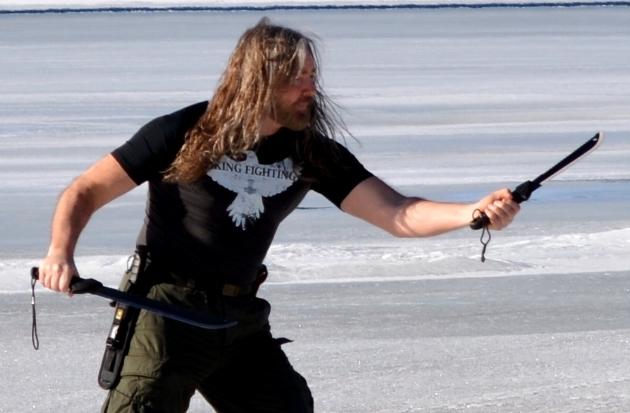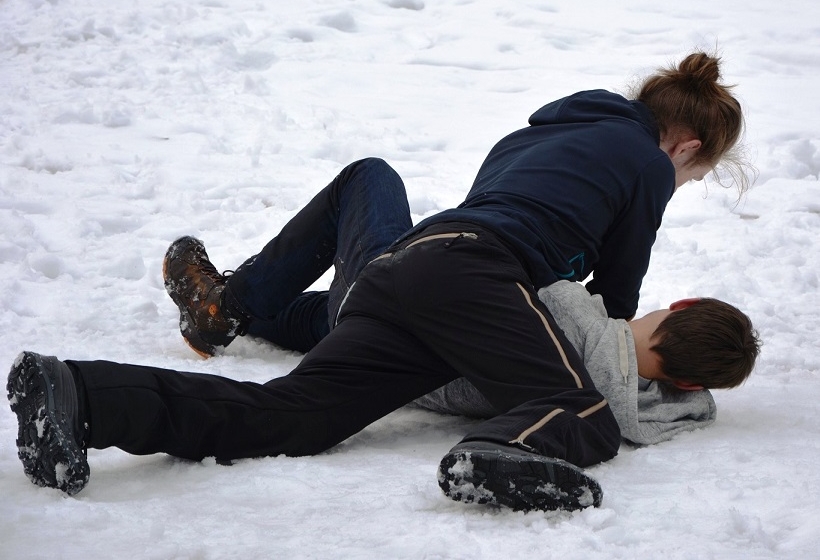Laustak is a no-nonsense complete system that covers the use of easily available modern weapons such as knife, stick and axe, and defense against such weapons.
Weapon training starts after students understand and can apply basic unarmed combat Laustak techniques. Working with simple modern weapons such as a stick and knife, not only teaches the mechanics and application of weapon use, it sharpens all unarmed techniques and reinforces coordination.
Weapon training with knife or axe and other modern hand weapons, starts when basic weapon techniques are understood and can be applied by a student.
Historical weapon training is a specialized field taught in historical combat glima classes, as regular combat Laustak classes are geared towards realistic armed and unarmed conflict.
Laustak has hand, elbow and knee strikes, block and shock techniques, kicks, grappling, wrestling, throws, takedowns, groundwork, pain techniques, and locking and choking techniques.
These techniques can be used seperately, or combined in fluid and lethal ways, from standing situations to fighting on the ground.
Laustak open-hand strikes are devastating. They are fast and extremely powerful from all angles. A person can't punch a brick wall with force and expect the hand not to be damaged or broken, but a person can hit a brick wall with force in an open hand strike without damage.
The same is true in combat. After one or many punches, the punching hand can be damaged or swollen, making it useless, but an open hand strike is powerful, remains undamaged, and can quickly turn into a grappling or gouging technique.
Laustak elbow and knee strikes are fearsome and can be used from a variety of angles against a wide range of targets.
Laustak kicks are quick and destructive because they are anatomically proficient and are directed to specific targets that ensure maximum effect. All combat Laustak techniques are executed in such a way as to end a fight as quickly as possible.






